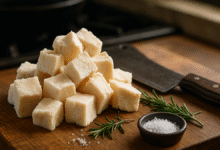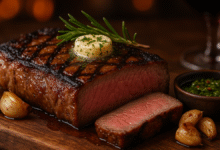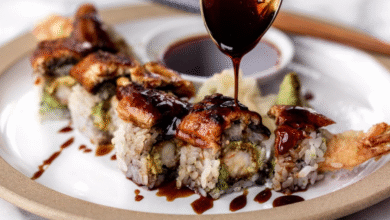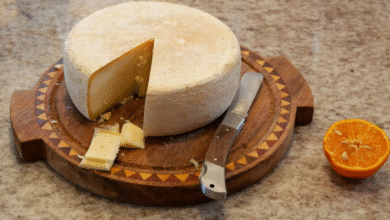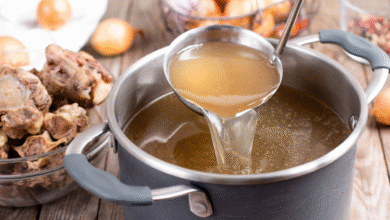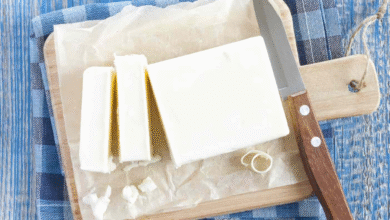New York Strip Steak: The Ultimate Guide to Flavor, Cooking, and Enjoyment
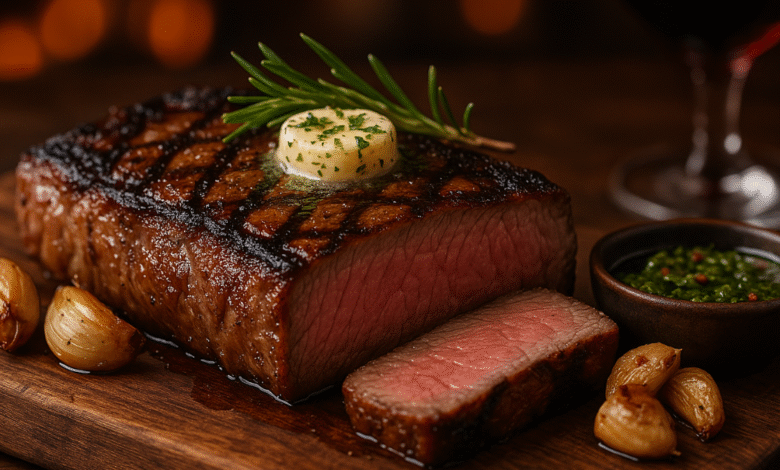
Discover everything about new york strip steak—flavor, cooking methods, buying tips, sides, and expert secrets for perfect results every time.
The new york strip steak is one of those cuts that instantly feels luxurious. Known for its rich beefy flavor and satisfying texture, it has become a classic centerpiece on steakhouse menus and backyard grills alike. Whether you’re planning a romantic dinner, a family cookout, or simply treating yourself, the new york strip steak delivers the perfect balance of tenderness and flavor.
This guide takes you deep into everything about new york strip steak: from its history and origins to cooking tips, side pairings, and expert secrets that make it shine. By the end, you’ll not only know why this cut is so popular but also how to cook it like a pro at home.
The Origins and Appeal of New York Strip Steak
The new york strip steak has earned its place as a classic cut of beef, but its name has a story. It traces back to New York City steakhouses in the 19th century. One iconic establishment, Delmonico’s, served a similar cut that became famous as “Delmonico steak.” Over time, the boneless short loin cut gained popularity as the new york strip steak.
What makes it unique is its balance. Unlike the filet mignon, which is buttery soft but mild in flavor, or the ribeye, which is intensely marbled but fattier, the new york strip steak sits right in the middle. It has a hearty bite yet stays tender, and its bold beef flavor stands out without being overwhelming. That balance is why both chefs and home cooks love it.
The Anatomy of the Cut
The new york strip steak comes from the short loin section of the cow, specifically the longissimus dorsi muscle. This area doesn’t do much work, so the meat is naturally tender. However, it still has enough marbling and connective tissue to deliver that signature chew and deep flavor.
A typical strip steak runs about 10 to 14 ounces when cut thick. It’s often sold boneless, though bone-in versions—sometimes called Kansas City strips—are also popular. Compared to other premium cuts, it strikes an affordable balance without sacrificing indulgence.
| Cut | Location on Cow | Texture | Flavor | Typical Size |
|---|---|---|---|---|
| Filet Mignon | Tenderloin | Extremely tender | Mild | 6–8 oz |
| Ribeye | Rib section | Juicy, fatty | Rich, buttery | 12–16 oz |
| New York Strip | Short loin | Firm, tender | Beefy, bold | 10–14 oz |
Choosing the Best New York Strip Steak
When buying a new york strip steak, the quality of the cut matters more than anything. The USDA grading system helps guide your choice. Prime-grade strip steak boasts heavy marbling, making it ideal for searing and grilling. Choice-grade is the most common, offering good marbling without the premium price. Select-grade tends to be leaner and less flavorful, so it’s worth paying a little extra for Choice or Prime.
Look for steaks with visible marbling running through the meat, bright red color, and firm texture. If you can, buy from a trusted butcher who cuts fresh steaks instead of pre-packaged ones. The thickness also matters—aim for at least 1.25 inches thick for the best cooking results.
Preparing New York Strip Steak for Cooking
Preparation is just as important as cooking. A great new york strip steak starts with bringing the meat to room temperature for even cooking. Season generously with coarse salt and cracked black pepper. Some chefs swear by minimal seasoning, while others like to add garlic powder, smoked paprika, or a steak rub.
Resting time is key. After seasoning, let the steak sit for at least 30 minutes before it hits the heat. This allows the salt to penetrate the meat, enhancing both flavor and tenderness. A drizzle of olive oil helps create a beautiful crust during cooking.
Cooking Methods for Perfect Results
The beauty of the new york strip steak is its versatility. You can pan-sear it, grill it, reverse-sear it in the oven, or even cook it sous-vide for precision.
Pan-Searing
Cooking in a cast-iron skillet delivers a restaurant-quality crust. Heat the skillet until it’s almost smoking, add oil, then sear the steak for about 3–4 minutes per side. Finish with butter, garlic, and herbs for a baste that elevates the flavor.
Grilling
For that smoky char, nothing beats a hot grill. Cook the steak over high direct heat, then move it to indirect heat to finish. A meat thermometer ensures accuracy—pull it off at 130°F for medium-rare perfection.
Reverse-Searing
This method involves baking the steak at a low temperature until nearly done, then searing it quickly in a skillet or on the grill. It gives more control over doneness and prevents overcooking.
Pairing Sides with New York Strip Steak
A great steak deserves sides that enhance without overpowering. Classic pairings include garlic mashed potatoes, roasted asparagus, or creamed spinach. For a lighter touch, consider a crisp arugula salad with lemon vinaigrette or roasted Brussels sprouts.
Wine pairing is equally important. A full-bodied red like Cabernet Sauvignon or Malbec complements the steak’s richness. For beer lovers, a dark stout or porter brings out the charred, smoky flavors beautifully.
Expert Tips and Secrets
One secret professionals use is the resting period after cooking. Let your new york strip steak sit for at least five minutes before slicing. This allows juices to redistribute, preventing them from spilling onto the plate.
Another trick is the butter baste. During the last minute of cooking, add butter, garlic, and thyme to the pan and spoon it over the steak. This infuses flavor and creates a glossy finish that looks as good as it tastes.
Common Mistakes to Avoid
Even the best cuts can be ruined by a few common errors. Overcooking tops the list—strip steak quickly goes from juicy to tough if left too long on the heat. Cutting too soon after cooking is another mistake, as it drains the juices.
Another pitfall is using low heat. The new york strip steak needs high heat to develop that iconic crust. Finally, avoid over-seasoning. The steak’s natural beef flavor should shine without being buried under spices.
FAQs about New York Strip Steak
1. What makes a new york strip steak different from a ribeye?
The ribeye has more marbling and fat, giving it a richer, buttery taste, while the new york strip steak is leaner with a firmer texture and bold beef flavor.
2. Should you marinate a new york strip steak?
It doesn’t need a marinade because of its natural flavor, but a light marinade with herbs and olive oil can add extra depth if desired.
3. What’s the best doneness level for new york strip steak?
Medium-rare (about 130°F) is ideal to maintain tenderness and juiciness. Going past medium can risk making the meat tough.
4. How long should you rest a new york strip steak?
Let it rest at least five minutes after cooking to lock in juices and keep it flavorful.
5. Can new york strip steak be cooked in the oven?
Yes. Sear it in a skillet first, then transfer to a 400°F oven until it reaches your desired doneness.
Conclusion
The new york strip steak isn’t just a meal; it’s an experience. With its perfect balance of tenderness, flavor, and versatility, it deserves a place in every steak lover’s kitchen. Whether seared in cast iron, grilled over charcoal, or finished in the oven, the new york strip steak delivers bold flavor and satisfaction every time. By choosing quality cuts, preparing them with care, and avoiding common mistakes, you’ll enjoy a steakhouse-worthy dish right at home.
